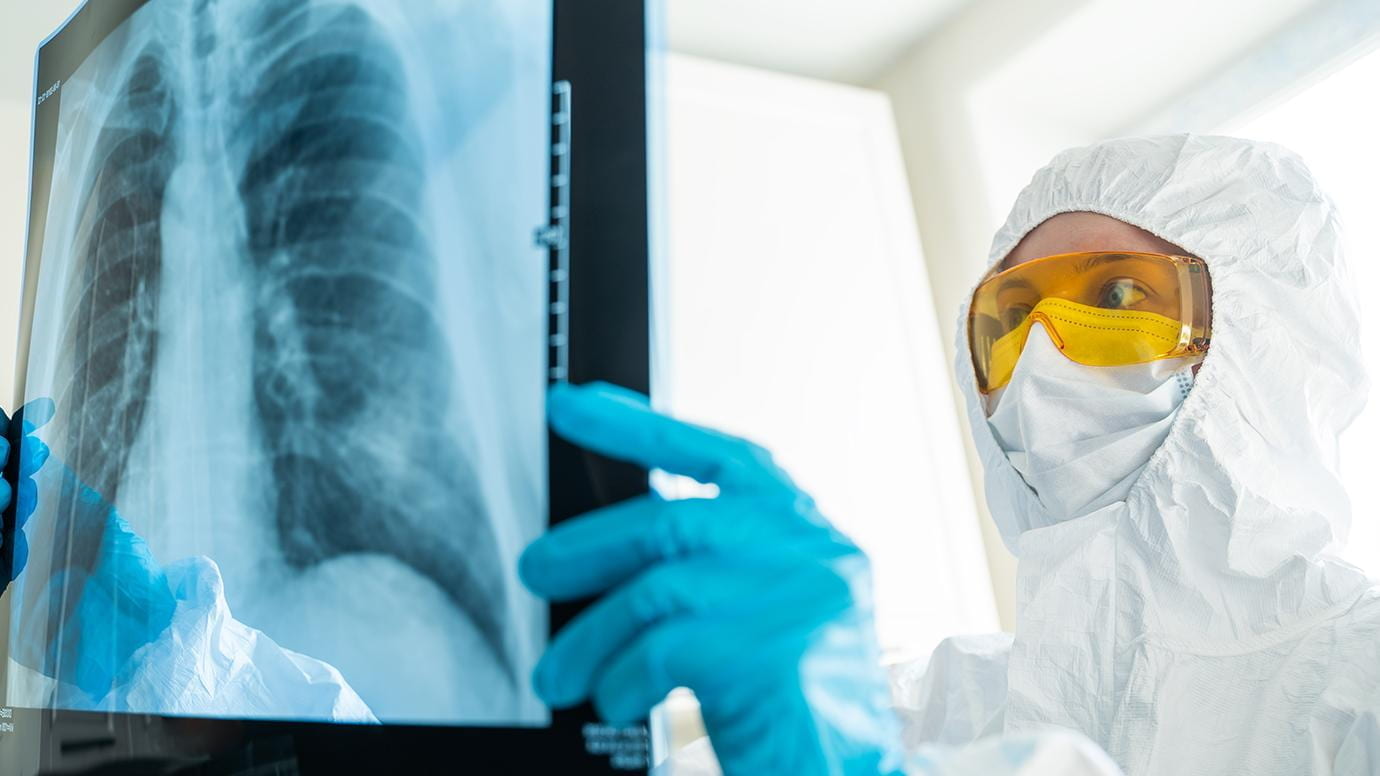UChicago, Argonne study hopes to learn to identify cases and guide treatment
As physicians and researchers grapple with a rapidly-spreading, deadly and novel disease, they need all the help they can get. Many centers are exploring whether artificial intelligence can help fight COVID-19, extracting knowledge from complex and rapidly growing data on how to best diagnose and treat patients.
One University of Chicago and Argonne National Laboratory collaboration believes that AI can be a helpful clinical partner for a particularly important kind of medical data: images. Because severe cases of COVID-19 most often present as a respiratory illness, triggering severe pneumonia in patients, chest X-rays and thoracic CT scans are a potential exam. With a grant from the new c3.ai Digital Transformation Institute, computer-aided diagnosis expert Maryellen Giger will lead an effort to develop new AI tools that use these medical images to diagnose, monitor and help plan treatment for COVID-19 patients.
Once developed, Giger hopes that the system will help clinicians in several different aspects of diagnosing and treating the disease. First, it potentially could aid radiologists in spotting the disease, both in patients already suspected of COVID-19 and in those who undergo lung screening for other conditions. Second, the AI model could help physicians differentiate between different stages of the infection, guiding treatment choices for individual patients. As time goes on, researchers also hope the new AI method could help identify cases of COVID-19 that were missed due to lack of symptoms or unavailability of tests.
“There are multiple parts: the detection and diagnosis, as well as the response to treatment,” Giger said. “How do we follow the disease? And when do we see a presentation that says ‘start treatment’? And if they are being treated, how can we follow to determine if the treatment is working? Can we use this to inform decisions and treatment?”
The project builds upon Giger’s decades of experience in developing AI methods to analyze medical images and interpret signs of disease, including lung, breast, and prostate cancer, lupus, and bone conditions. The research will draw upon approaches in computer vision and deep learning from her UChicago lab, clinical lung imaging expertise from the UChicago Department of Radiology, and computational resources at Argonne.
“We’re taking our AI development knowledge that we’ve learned from analyzing other lung diseases and using it here,” Giger said. “In doing so, we will conduct transfer learning and get away with a lot fewer cases as we combine medical imaging intelligence with machine intelligence.”
Like other clinical computer vision systems, the COVID-19 tool will be trained with real data to differentiate between chest images from patients with and without the infection. But this training typically requires large amounts of data, and in these early stages of the pandemic, COVID-19 medical images following patients from diagnosis through recovery remain scarce. The project will begin with a dataset from Chinese patients, and expand to include cases from UChicago Medicine and other health centers as it proceeds to a goal of 1000 cases.
Read more at UChicago News.

